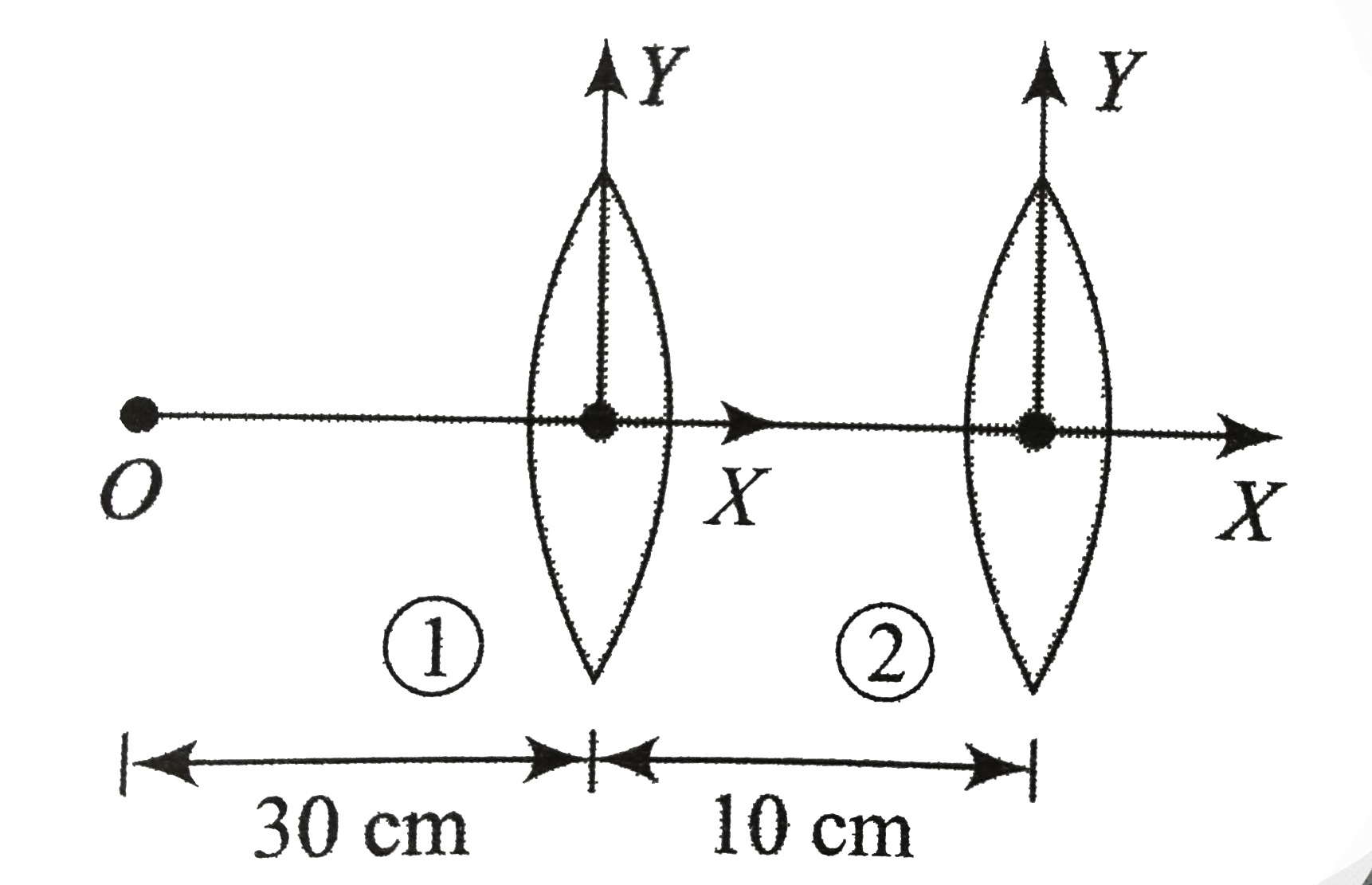A convex lens has mean focal length of 20 cm. The dispersive power of the material of the lens is 0.02. The longitudinal chromatic aberration for an object at infinity is
103
0.8
0.4
0.2
The correct Answer is:C
To find the longitudinal chromatic aberration for a convex lens with a given mean focal length and dispersive power, we can follow these steps:
1. Understand Longitudinal Chromatic Aberration (LCA):
- LCA is the difference in focal lengths for different wavelengths of light. It can be calculated using the formula:
LCA=ω×f
where ω is the dispersive power of the lens material, and f is the mean focal length of the lens.
2. Identify Given Values:
- Mean focal length, f=20 cm
- Dispersive power, ω=0.02
3. Substitute the Values into the Formula:
- Plug the values into the LCA formula:
LCA=0.02×20 cm
4. Calculate the Longitudinal Chromatic Aberration:
- Perform the multiplication:
LCA=0.40 cm
5. Final Answer:
- The longitudinal chromatic aberration for the lens is 0.40 cm.
Summary of the Calculation:
- LCA=ω×f=0.02×20=0.40 cm
- LCA is the difference in focal lengths for different wavelengths of light. It can be calculated using the formula:
LCA=ω×f
where ω is the dispersive power of the lens material, and f is the mean focal length of the lens.
- Mean focal length, f=20 cm
- Dispersive power, ω=0.02
- Plug the values into the LCA formula:
LCA=0.02×20 cm
- Perform the multiplication:
LCA=0.40 cm
- The longitudinal chromatic aberration for the lens is 0.40 cm.
- LCA=ω×f=0.02×20=0.40 cm
Topper's Solved these Questions
- RAY OPTICSBOOK - DC PANDEY ENGLISHCHAPTER - RAY OPTICSEXERCISE - medical entrance special format question
23 Videos
- RAY OPTICSBOOK - DC PANDEY ENGLISHCHAPTER - RAY OPTICSEXERCISE - Medical entrance gallary
76 Videos
- RAY OPTICSBOOK - DC PANDEY ENGLISHCHAPTER - RAY OPTICSEXERCISE - Checkpoint 9.7
10 Videos
- NUCLEIBOOK - DC PANDEY ENGLISHCHAPTER - NUCLEIEXERCISE - C MADICAL ENTRANCES GALLERY
46 Videos
- REFLECTION OF LIGHTBOOK - DC PANDEY ENGLISHCHAPTER - REFLECTION OF LIGHTEXERCISE - Subjective
9 Videos
Similar Questions
An achromatic lens-doublet is formed by placing in contact a convex lens of focal length 20cm and a concave lens of focal length 30cm. The dispersive power of the material of the convex lens is 0.8. Determine the dispersive power of the material of the concave lens. Calculate the focal length of the lens-doublet.
View SolutionA focal length of a lens 10cm. What is power of a lens in dipotre?
View Solution
Knowledge Check
A plano convex lens has focal length f=20cm. If its plane surface is silvered, then new focal length will be
A20cmB40 cmC30 cmD10 cmA convex lens of focal length 15 cm is placed on a plane mirror. An object is placed at 30 cm from the lens. The image is
Areal, at 30 cm in front of the mirrorBreal, at 30 cm behind the mirrorCreal, at 10 cm in front of the mirrorDvirtual, at 10 cm behind the mirror
A convex lens has a focal length of 20 cm. It is used to form an image of an object placed 15 cm from lens. The image is
View SolutionA bicovex lens has radii of cuvature 20 cm each. If the refractive index of the material of the lens is 1.5, what is its focal length?
View SolutionAn object is placed 12cm to the left of a diverging lens of focal length −6.0cm. A converging lens with a focal length of 12.0cm is placed at a distance d to the right of the diverging lens. Find the distance d that corresponds to a final image at infinity.
View SolutionThe radius of curvature of the convex face of a plano convex lens is 12cm and the refractive index of the material of the lends 1.5. Then, the focal length of the lens is
View SolutionTwo plano-convex lenses of focal lengths 20cm and 30cm are placed together to form a double convex lens. The final focal length will be
View SolutionA convex lens of focal length 20cm is placed 10cm away from a second convex lens of focal length 25 cm. What wil be the location of the image of an object at 30 cm in front of the first lens?

View Solution
